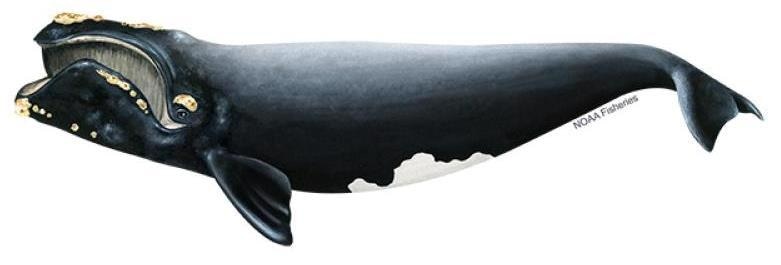According to a new global study that determined future ocean “acoustic hotspots,” the traveling of sound underwater will be considerably altered by climate change. This will possibly impact natural soundscapes as well as emphasize human-generated noise.
 Warmer oceans mean sound will travel faster, impacting marine animals who depend on sounds to find each other and eat. The largest effect on the underwater speed of sound can be expected east of Greenland and off Newfoundland in the Atlantic, according to a new study in the AGU journal Earth’s Future. Image Credit: NOAA.
Warmer oceans mean sound will travel faster, impacting marine animals who depend on sounds to find each other and eat. The largest effect on the underwater speed of sound can be expected east of Greenland and off Newfoundland in the Atlantic, according to a new study in the AGU journal Earth’s Future. Image Credit: NOAA.
Such changes caused to ocean soundscapes can affect crucial activities of marine life. In warmer water, sound waves tend to propagate quicker and last longer before subsiding.
We calculated the effects of temperature, depth, and salinity based on public data to model the soundscape of the future.
Alice Affatati, Study Lead Author and Bioacoustics Researcher, Memorial University of Newfoundland
Affatati is also a researcher in Labrador in St. John’s, Canada.
The study has been published in the Earth’s Future, AGU’s journal for interdisciplinary study on the past, present, and future of the planet and its inhabitants. It is considered to be the first global-scale estimate of ocean sound speed associated with the future climate.
The new study performed projected that two hotspots, present in the Greenland Sea and a patch of the northwestern Atlantic Ocean east of Newfoundland, can anticipate the majority of the changes occurring at the depth of 50 and 500 m.
The sound’s average speed is likely to increase by over 1.5%, or around 25 m per second (55 miles per hour) in these waters from the surface to depths of 500 m (1,640 feet), by the end of the era, provided constant high greenhouse gas emissions (RCP8.5).
The major impact is expected in the Arctic, where we know already there is amplification of the effects of climate change now. Not all the Arctic, but one specific part where all factors play together to give a signal that, according to the model predictions, overcomes the uncertainty of the model itself.
Stefano Salon, Study Researcher, National Institute of Oceanography and Applied Geophysics
The ocean soundscape is a cacophony of vibrations that are generated by living organisms, natural phenomena like cracking ice and waves, ship traffic and resource extraction.
Sound traveling at a speed at 50 m depth ranges from 1,450 m per second in the polar regions to 1,520 m per second in equatorial waters (3,243 to 3,400 miles per hour, respectively).
Sound is the medium used by several marine animals to communicate with each other and explore their underwater world. Any changes in the sound speed could affect their potential to fight, feed, find mates, avoid predators and migrate, stated the authors.
Changing Soundscapes
Besides the prominent hotpots present around Greenland and also in the northwestern Atlantic Ocean, the new study has discovered a 1% sound speed increase, over 15 m per second, at 50 m in the Barents Sea, northwestern Pacific and in the Southern Ocean (between 0 and 70E), and 500 m in the Arctic Ocean, Gulf of Mexico, and the southern Caribbean Sea.
Pressure and temperature with increasing depth and salinity are the factors that affect how fast and how far sound travels in water. In the new study, the scientists concentrated on hotspots where the climate signal emphasized clearly from the model doubt and was bigger compared to seasonal variability.
Furthermore, the new study modeled general vocalizations, under the projected future conditions, of the North Atlantic right whale. It is a crucially endangered species residing in both north Atlantic acoustic hotspots. The whales’ normal “upcall” at 50 Hertz is likely to circulate further in a warmer future ocean, the scientists discovered.
We chose to talk about one megafauna species, but many trophic levels in the ocean are affected by the soundscape or use sound. All these hotspots are locations of great biodiversity.
Alice Affatati, Study Lead Author and Bioacoustics Researcher, Memorial University of Newfoundland
Additional work performed will integrate the global soundscape along with other maps of anthropogenic impacts in the oceans to spot regions of combined stressors or observational research that is required directly.
“With complicated problems like climate change, to combine different approaches is the way to go,” stated author Chiara Scaini, an environmental engineer at the National Institute of Oceanography and Applied Geophysics.
Journal Reference:
Affatati, A., et al. (2022) Ocean Sound Propagation in a Changing Climate: Global Sound Speed Changes and Identification of Acoustic Hotspots. Earth’s Future. doi.org/10.1029/2021EF002099.